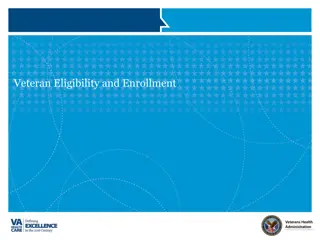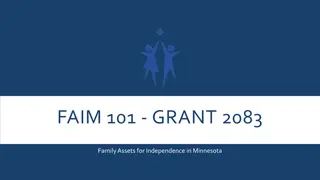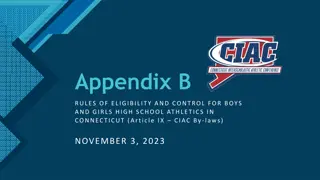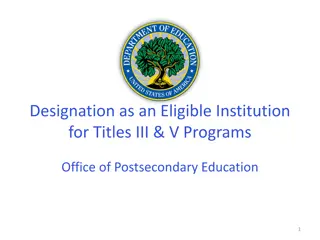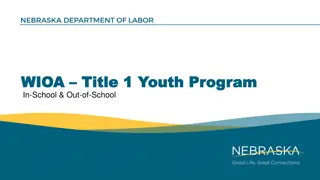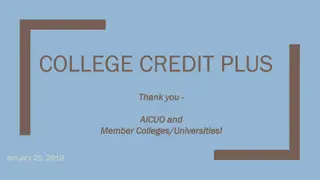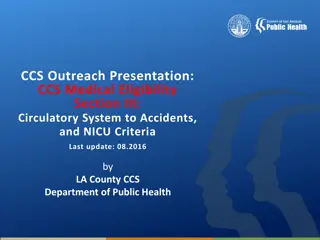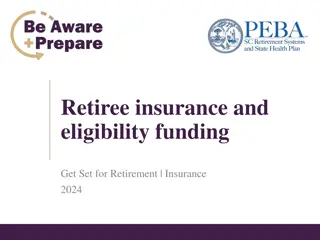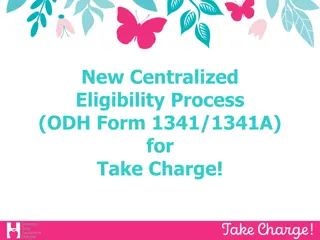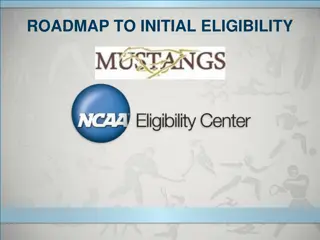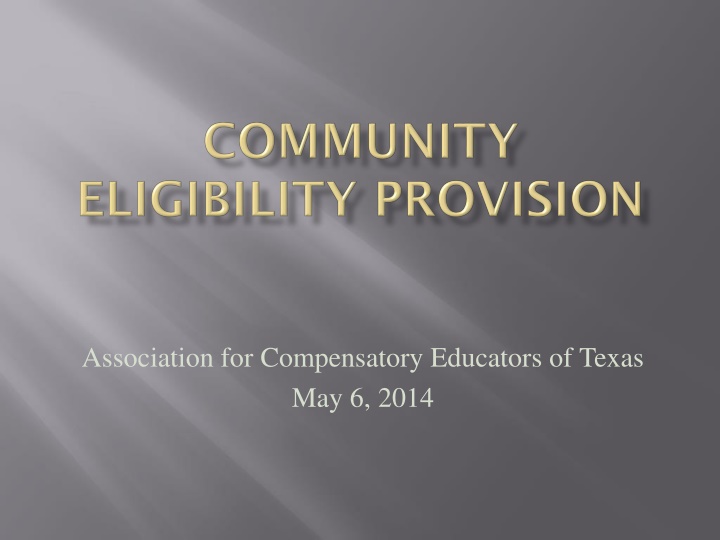
Community Eligibility Provision (CEP) in Texas Schools
Learn about the Community Eligibility Provision (CEP) in Texas schools, which offers free meals to all students in high-poverty areas without requiring household applications. Discover participation requirements, eligibility criteria, and key definitions regarding CEP implementation.
Download Presentation

Please find below an Image/Link to download the presentation.
The content on the website is provided AS IS for your information and personal use only. It may not be sold, licensed, or shared on other websites without obtaining consent from the author. If you encounter any issues during the download, it is possible that the publisher has removed the file from their server.
You are allowed to download the files provided on this website for personal or commercial use, subject to the condition that they are used lawfully. All files are the property of their respective owners.
The content on the website is provided AS IS for your information and personal use only. It may not be sold, licensed, or shared on other websites without obtaining consent from the author.
E N D
Presentation Transcript
Association for Compensatory Educators of Texas May 6, 2014
Overview of CEP What is it? How does it work? Who can do it? When is it available? What does the school have to do?
Background What is it? Section 104a of the Healthy, Hunger-Free Kids Act Provides an alternative to obtaining household applications for free and reduced price meals Offers all students free meals in high poverty schools All states are eligible to offer CEP starting in SY 14
Participation Requirements How does it work? Schools electing CEP must offer lunch and breakfasts at no charge to all enrolled students for a cycle of 4 years. Schools only count & report total reimbursable lunches and breakfasts served to students daily. Schools do not collect household applications for the purpose of identifying students eligible for free and reduced price meals.
Eligibility Criteria Who can do it? Residential Child Care Institutions are not eligible and may not participate. The school must have an identified student percentage of at least 40% as of April 1stof the school year prior to implementing CEP.
Definitions: Identified Students: Children who are certified for free school meals without the use of a household application. Students certified based on documentation of benefit receipt or categorical eligibility as described in 7 CFR part 245 This is based on the data as of April 1, 2014. And then each April 1 thereafter. TXUNPS-Texas Unified Nutrition Programs System- used by schools to apply and submit claims for the National School Lunch and Breakfast Program
Definitions continued Enrolled Students: Students who are enrolled in and attending schools who have access to at least one meal service daily. Worth noting - Students who do not have access to either breakfast or lunch due to the times they are attending school would not be included in the count of enrolled students
Basic Timeline: When is it available? April 1st TDA obtains school level info from CEs and provides guidance on program participation. April 15th- Schools can start applying when applications open in TX-UNPS. April 15th TDA publishes list of eligible schools on Squaremeals. June 30th Schools must have completed their application to participate, or they will not be eligible.
Decision time: What does the school have to do? Report the identified student and enrollment numbers, by site, to TDA by April 1st. Analyze the data and business options to decide what would be best for business and best for the CN program. Fill out the application in TX-UNPS. Follow the regulations.
Identified Student Percentage Identified Student % = # of Identified students Total # of enrolled students with access to NSLP/SBP X 100 Example: {500 Indentified Students / 1,000 Total # enrolled }*100 = 50% - this is the identified student percentage
CEP Claiming Percentages Identified student percentage multiplied by a factor of 1.6 equals the % of total meals served reimbursed at the Federal free rate The remaining % of total meals is reimbursed at the Federal paid rate Any meal costs in excess of the total Federal reimbursement must be covered through non-Federal sources
Where did the 1.6 come from? Analysis showed that on average for every 10 identified students there were 6 more students certified based on an income application. If you multiply the identified student percentage by 1.6 you are approximating the free and reduced price percentage . This is based on the average and USDA sets the limit.
Pop Quiz: What identified student percent equates to 100% of the enrollment being eligible to claim meals at the free reimbursement rate?
Pop Quiz: What identified student percent equates to 100% of the enrollment being eligible to claim meals at the free reimbursement rate? 62.5% (62.5 * 1.6) = 100%
The identified student percentage may be determined by: An individual participating school. A group (or several groups) of participating schools. The entire district.
CEP Grouping: Best Practices Two reasons to group sites Qualify a near-eligible site with an eligible site School A: 105/300=35% Identified Percentage School B: 325/500=65% Identified Percentage Resulting Group: 53.75% Identified Percentage School C claiming percentage is >100% When a site s identified percentage is >62.5%, then group with another site so as not to exceed 100% of meals being reimbursed at free rate. Pop quiz #2 in the example above what is the free claiming percentage for the two schools grouped together?
CEP Grouping: Best Practices Two reasons to group sites Qualify a near-eligible site with an eligible site School A: 105/300=35% Identified Percentage School B: 325/500=65% Identified Percentage Resulting Group: 53.75% Identified Percentage Pop quiz #2 in the example above what is the free claiming percentage for the two schools grouped together? 86% (53.75 * 1.6) = 86%
Updating the Claiming Percentages A new identified student percentage may be established each year During the 2nd, 3rd and 4th years, the school may select the higher of the identified student percentage from The original year s data, or They can establish a new percent using the most recent April 1 data.
Procedures Documentation Schools intending to elect CEP for some or all schools must Submit their identified and enrollment student numbers to TDA by April 1. Submit to TDA their participation documentation by June 30th of the year prior to starting CEP . Ensure documentation demonstrates school or CE meets the identified student percentage threshold as of April 1st of the prior school year.
State Agency Review of the Application The State agency must review the CEs documentation to ensure the CE/Group/School Meet the minimum identified student percentage Participates in both the NSLP and SBP Has a record of administering the meal program in accordance with program regulations
New 4 year Cycle To begin a new 4-year cycle, CEs or schools must establish a new identified student percentage as of April 1 of the fourth year of the previous cycle. Schools may begin a new 4-year cycle if all eligibility criteria is met. Schools in year 4 with an identified student percentage of less than 40% but more than 30% may elect for an additional year (a grace year).
Annual Notification Lists Each year TDA must assemble lists of schools in the following categories: Eligible district wide (identified student % 40% or >) Nearly eligible district wide (identified student % greater than 30% but less than 40%) Currently operating CEP district wide Currently in the 4th year of CEP and eligible for a grace year (less than 40% but greater than 30%)
A Few Benefits of CEP Increases access to school meals for children in high poverty areas . Increases overall program participation. Reduces chance of overt identification. Eliminates the administrative burden of verification. Requires no base year data collection like other provisions do.
Other Child Nutrition Programs The CEP free claiming percentage serves as a proxy for free and reduced price certifications. May be used when determining school or site eligibility for other Child Nutrition Programs. US Dept. of Ed. came out with guidance regarding Title I funding
Squaremeals.org/CEP *TDA Policy Guidance *FAQS *Title I Guidance *State Compensatory Guidance *Application Instructions
Thank you! The Texas Department of Agriculture s Food and Nutrition Division is funded by the U.S. Department of Agriculture, Food and Nutrition Service. The U.S. Department of Agriculture prohibits discrimination against its customers, employees, and applicants for employment on the bases of race, color, national origin, age, disability, sex, gender identity, religion, reprisal, and where applicable, political beliefs, marital status, familial or parental status, sexual orientation, or all or part of an individual s income is derived from any public assistance program, or protected genetic information in employment or in any program or activity conducted or funded by the Department. (Not all prohibited bases will apply to all programs and/or employment activities.) If you wish to file a Civil Rights program complaint of discrimination, complete the USDA Program Discrimination Compliant Form, found online at http://www.ascr.usda.gov/complaint_filing_cust.html, or at any USDA office, or call (866) 632-9992 to request the form. You may also write a letter containing all of the information requested in the form. Send your completed compliant form or letter to us by mail at U.S. Department of Agriculture, Director, Office Adjudication, 1400 Independence Avenue, S.W., Washington, D.C. 20250-9410, by fax (202) 690-7442 or email at program.intake@usda.gov. Individuals who are deaf, hard of hearing or have speech disabilities may contact USDA through the Federal Relay Service at (800) 877-8339; or (800) 845-6136 (Spanish). 27 USDA is an equal opportunity provider and employer.



